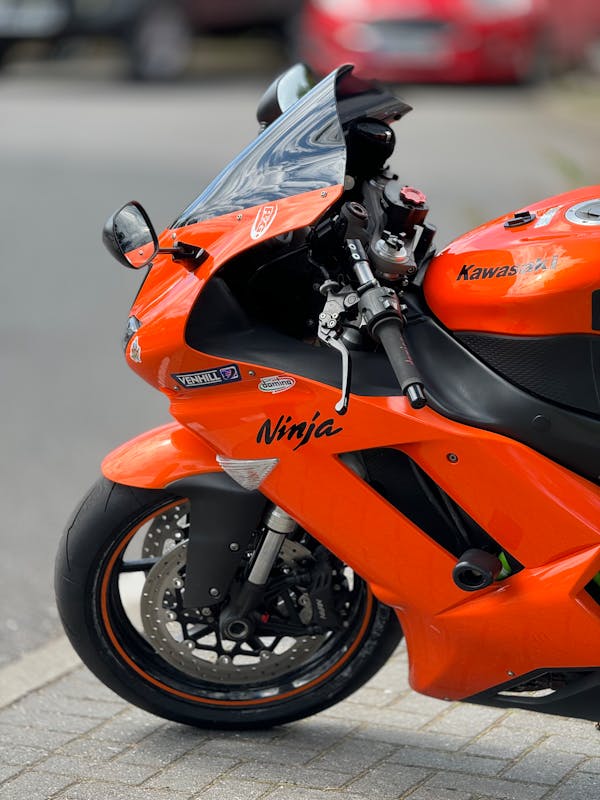The motorcycle exhaust system removes the gases produced while your bike is running. It has a number of jobs including increasing power, reducing noise, and scrubbing hazardous compounds. It’s a complicated task that requires balancing the needs of different stakeholders.
Upgrading the exhaust system can improve performance, weight reduction, and aesthetics. Exhaust pipes come in many styles and materials. They can also have unique sound characteristics that set your bike apart from the crowd. For more relevant information, check out motorcycle exhaust technology.
Pipe headers
A pipe header is the first part of a full exhaust system. It collects and channels the exhaust gasses from the engine cylinders into one large primary tube. Headers can increase power performance by improving cylinder volumetric efficiency through extraction, reducing exhaust temperatures, and scrubbing hazardous chemicals from the gasses.
When the exhaust valve opens during a piston’s power stroke, a pulse of combustion gases rushes down the cylinder head into the header. This pulse travels through the long runners, a series of straight segments that join to form the collector. The runner lengths are “timed” to arrive at the collector at different times, preventing the pulses from colliding and creating a restriction that forces the engine to pump exhaust out – a problem known as pumping loss.
As the pulse of gasses travels down the header, it undergoes various reflections as it passes by the different tube sizes. Each reflection reduces the scavenge strength of that particular wave, increasing the overall pressure gradient and velocity through the system.
Straight or drag exhaust pipe
In general, straight pipes offer less restriction to exhaust flow, allowing the engine to expend more power to push the gasses out. This can also improve scavenging since the exhaust pulse from one cylinder helps pull the next one through the pipe.
However, if the pipe is too short it can actually cause a sonic pulse that turns around and pushes exhaust back into the cylinder (this condition is known as reversion). This causes loss of horsepower. Some exhaust specialists compensate for this by adding anti-reversion cones to the pipe.

Longer drag pipes like those offered by Python3, Samson, Vance & Hines and Hooker tend to suffer from this as well but can be rectified with the use of baffles and increased diameters. These pipes will still produce a strong wave reflection but will be weaker at the tuned rpm point, resulting in a wider power band.
Four-into-two exhaust pipes
A four-into-two exhaust pipe has two headers for each of the engine’s four cylinders that merge into one collector and exhaust pipe. This design produces a scavenging effect that increases flow velocity and reduces the amount of energy needed to push the exhaust out, resulting in more power.
While there is a wide range of motorcycle exhausts available, the best option depends on your riding style and goals. If you ride a lot of highway miles, you may want to choose a quieter system with a lighter weight. If you race on the track, you may need a more aggressive sound and increased power.
Modern aftermarket exhausts are finely tuned to improve performance without being obnoxiously loud. They are designed to provide power gains, weight savings and a sleek, appealing appearance. Some even have unique finishes or turn colors when they heat up. This helps riders stand out in a crowd. Some are even dyno-tested to ensure they deliver on their promises.
Slip-on exhaust
Many motorcycle riders want a more aggressive-sounding bike, but power gains aren’t always the primary reason for purchasing a new exhaust. Weight savings and a more appealing appearance are usually the driving factors.

The shape, size, and internal components of the muffler all influence the sound quality. The most common material is stainless steel, but titanium and carbon fiber are also available. Titanium offers performance and a unique look at a premium price, while stainless steel is inexpensive, durable, and doesn’t rust.
Slip-on systems are designed to replace the factory muffler and provide performance improvements without the cost of a full exhaust system upgrade. Depending on the system, it may be possible to achieve significant horsepower and torque increases while reducing overall weight for a more responsive ride. Brock’s Performance offers a wide range of slip-ons for most motorcycle models, all of which come with world-class customer support.
